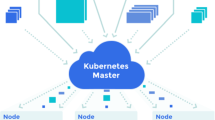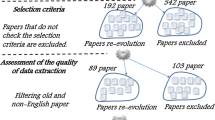Abstract
Thermal-aware (TA) task allocation is one of the most effective software-based dynamic thermal management techniques to minimize energy consumption in data centers (DCs). Compared to its counterparts, TA scheduling attains significant gains in energy consumption. However, the existing literature overlooks the heterogeneity of computing elements in terms of thermal constraints while allocating or migrating user jobs, which may significantly affect the reliability of racks and all the equipment therein. Moreover, the workload distribution among these racks/servers is not fair and efficient in terms of thermal footprints; it is potentially beneficial to determine the workload proportion for each computing node (rack/server) based on its marginal contribution in disturbing the thermal uniformity (TU) in a DC environment. To solve the said problems, we model the workload distribution in DCs as a coalition formation game with the Shapley Value (SV) solution concept. Also, we devise Shapley Workload (SW), a TA scheduling scheme based on the SV to optimize the TU and minimize the cooling cost of DCs. Specifically, the scheduling decisions are based on the ambient effect of the neighboring nodes, for the ambient temperature is affected by the following two factors: (1) the current temperature of computing components and (2) the physical organization of computing elements. This results in lower temperature values and better TU, consequently leading to lower cooling costs. Simulation results demonstrate that the proposed strategy greatly reduces the total energy consumption compared to the existing state-of-the-art.









Similar content being viewed by others
References
Nagma K, Jagpreet S, Jaiteg S (2019) Toward energyefficient cloud computing: a survey of dynamic power management and heuristics-based optimization techniques. J Supercomput 75(8):4750–4810
Oxley MA et al (2018) Rate-based thermal, power, and co-location aware resource management for heterogeneous data centers. J Parallel Distrib Comput 112:126–139
Ruan X et al (2019) Virtual machine allocation and migration based on performance-to-power ratio in energy-efficient clouds. Futur Gener Comput Syst 100:380–394
Akbar S et al (2021) A game-based thermal-aware resource allocation strategy for data centers. IEEE Trans Cloud Comput 9(3):845–853
Anurina T et al (2020) Energy and quality of service-aware virtual machine consolidation in a cloud data center. J Supercomput 76:1–32
Singh Gill S et al (2020) ThermoSim: deep learning based framework for modeling and simulation of thermal-aware resource management for cloud computing environments. J Syst Softw 166:110596
Chaudhry MT et al (2015) Thermal-aware scheduling in green data centers. ACM Comput Surv 47(3):1–48
Peng X et al (2021) A power and thermal-aware virtual machine management framework based on machine learning. Clust Comput 24(3):1–18
Wu L, Garg SK, Buyya R (2012) SLA-based admission control for a software-as-a-service provider in cloud computing environments. J Comput Syst Sci 78(5). JCSS Special Issue: Cloud Comput 2011, pp 1280–1299
Wang Y et al (2019) Experimental characterization of variation in power consumption for processors of different generations. In: 2019 International Conference on Internet of Things (iThings) and IEEE Green Computing and Communications (GreenCom) and IEEE Cyber, Physical and Social Computing (CPSCom) and IEEE Smart Data (SmartData). IEEE, pp 702–710
Zhang X et al (2013) A high-level energy consumption model for heterogeneous data centers. Simul Model Pract Theory 39:41–55
Ilager S, Ramamohanarao K, Buyya R (2019) ETAS: energy and thermal-aware dynamic virtual machine consolidation in cloud data center with proactive hotspot mitigation. Concurr Comput Pract Exp 31(17):e5221
Sun H, Stolf P, Pierson J-M (2017) Spatio-temporal thermal-aware scheduling for homogeneous high-performance computing datacenters. Futur Gener Comput Syst 71:157–170
Beloglazov A, Abawajy J, Buyya R (2012) Energy-aware resource allocation heuristics for efficient management of data centers for cloud computing. Future Gener Comput Syst Special Section: Energy efficiency in large-scale distributed systems, vol 28(5), pp 755 –768
Yang J et al (2017) A task scheduling algorithm considering game theory designed for energy management in cloud computing. Future Gener Comput Syst 105:985–992
Wang L, Khan SU, Dayal J (2012) Thermal aware workload placement with task-temperature profiles in a data center. J Supercomput 61(3):780–803
Van Damme T, De Persis C, Tesi P (2019) Optimized thermal-aware job scheduling and control of data centers. IEEE Trans Control Syst Technol 27(2):760–771
Zakarya M, Gillam L (2017) Energy efficient computing, clusters, grids and clouds: a taxonomy and survey. Sustain Comput Inf Syst 14:13–33
Moore JD et al (2005) Making scheduling “cool”: temperature-aware workload placement in data centers. In: USENIX Annual Technical Conference. USENIX Annual Technical Conference, pp 61–75
Tang Q, Gupta SKS, Varsamopoulos G (2008) Energy-efficient thermal- aware task scheduling for homogeneous high-performance computing data centers: a cyber-physical approach. IEEE Trans Parallel Distrib Syst 19(11):1458–1472
Martin J (1994) Osborne and Ariel Rubinstein. A course in game theory. MIT Press, Cambridge
Winter Eyal (2002) The shapley value. In: Handbook of game theory with economic applications, vol 3, pp 2025–2054
Malik SUR et al (2017) Modeling and analysis of the thermal properties exhibited by cyberphysical data centers. IEEE Syst J 11(1):163–172
Lee EK, Viswanathan H, Pompili D (2012) VMAP: Proactive thermalaware virtual machine allocation in HPC cloud datacenters. In: 19th International Conference on High Performance Computing, pp 1–10
Lee EK, Viswanathan H, Pompili D (2017) Proactive thermal-aware resource management in virtualized HPC cloud datacenters. IEEE Trans Cloud Comput 5(2):234–248
Liu H et al (2017) Thermal-aware and DVFS-enabled big data task scheduling for data centers. IEEE Trans Big Data 4(2):177–190
Lee EK et al (2012) Proactive thermal management in green datacenters. J Supercomput 60(2):165–195
MirhoseiniNejad SM et al (2020) Joint data center cooling and workload management: a thermal-aware approach. Futur Gener Comput Syst 104:174–186
Xu S, Koren I, Krishna CM (2019) Thermal aware task scheduling for enhanced cyber-physical systems sustainability. IEEE Trans Sustain Comput 5:581–593
Villebonnet V, Costa GD (2014) Thermal-aware cloud middleware to reduce cooling needs. In: IEEE 23rd International WETICE Conference, pp 115–120
Jiang Z et al (2014) Thermal-Aware task placement with dynamic thermal model in an established datacenter. In: Eighth International Conference on Innovative Mobile and Internet Services in Ubiquitous Computing. Eighth International Conference on Innovative Mobile and Internet Services in Ubiquitous Computing, pp 1–8
Fang Q et al (2017) Thermal-aware energy management of an HPC data center via two-time-scale control. IEEE Trans Industr Inf 13(5):2260–2269
Wang JV, Cheng C-T, Tse CK (2019) A thermal-aware VM consolidation mechanism with outage avoidance. Softw Pract Exp 49(5):906–920
Ahmed K, Yoshii K, Tasnim S (2019) Thermal-aware power capping allocation model for high performance computing systems. In: 2019 International Conference on Computational Science and Computational Intelligence (CSCI). IEEE, pp 1488–1493
Wu W et al (2019) Data center job scheduling algorithm based on temperature prediction. In: International Conference on Smart City and Informatization. Springer. pp 86–104
Guo C et al (2021) Temperature-aware virtual data center embedding to avoid hot spots in data centers. IEEE Trans Green Commun Network 5(1):497–511
Al-Qawasmeh AM et al (2015) Power and thermal-aware workload allocation in heterogeneous data centers. IEEE Trans Comput 64(2):477–491
Sun H et al (2014) Energy-efficient and thermal-aware resource management for heterogeneous datacenters. Sustain Comput Inf Syst 4(4):292–306
Pierson JM et al (2019) MILP formulations for spatio-temporal thermalaware scheduling in Cloud and HPC datacenters. Cluster Comput, pp 1–19
Kim YG et al (2019) Temperature-aware adaptive VM allocation in heterogeneous data centers. In: IEEE/ACM International Symposium on Low Power Electronics and Design (ISLPED), pp 1–6
Akbari A, Khonsari A, Ghoreyshi SM (2020) Thermal-aware virtual machine allocation for heterogeneous cloud data centers. Energies 13(11):2880
MirhoseiniNejad SM, Badawy G, Down DG (2021) Holistic thermal-aware workload management and infrastructure control for heterogeneous data centers using machine learning. Futur Gener Comput Syst 118:208–218
Kim YG et al (2021) Thermal-aware adaptive VM allocation considering server locations in heterogeneous data centers. J Syst Archit 117:102071
Ullah R et al (2018) Simulator for modeling, analysis, and visualizations of thermal status in data centers. Sustain Comput Inf Syst 19:324–340
Fatima SS, Wooldridge M, Jennings NR (2008) A linear approximation method for the Shapley value. Artif Intell 172(14):1673–1699 (issn: 0004-3702)
Leila I, Huned M (2020) Computing server power modeling in a data center: survey, taxonomy, and performance evaluation. ACM Comput Surv 53(3):1–34
Standard Performance Evaluation Corporation SPEC power benchmarks. http://www.spec.org/benchmarks.html#power
Acknowledgements
This work is supported by the National Key Research and Development Program of China under Grants 2016YFB0800402, National Natural Science Foundation of China under Grants U1836204 and U1936108, and Major Projects of the National Social Science Foundation under grant 16ZDA092.
Author information
Authors and Affiliations
Corresponding author
Additional information
Publisher's Note
Springer Nature remains neutral with regard to jurisdictional claims in published maps and institutional affiliations.
Rights and permissions
About this article
Cite this article
Akbar, S., Li, R. A Shapley value-based thermal-efficient workload distribution in heterogeneous data centers. J Supercomput 78, 14419–14447 (2022). https://doi.org/10.1007/s11227-022-04405-7
Accepted:
Published:
Issue Date:
DOI: https://doi.org/10.1007/s11227-022-04405-7




